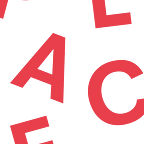Learning from Lankelly Chase’s experience of devolved decision making: implications for governance and accountability
Max French and Amy Wheatman, Northumbria University
For Lankelly Chase, the devolution of decision making is both a core value and system behaviour, underpinning a belief that decisions are best made by those most closely affected by them.
Lankelly Chase’s journey through its Place Action Inquiry has provided an opportunity to move further with this practice and explore how power and decision making authority can be meaningfully devolved to places.
We are conducting research to explore the barriers, opportunities and possibilities of this journey, and will be sharing updates every now and then as food for thought and invitations to comment.
In this first blog, we take stock of our recent round of interviews with Lankelly Chase Foundation’s trustees to consider some of the implications which devolved decision making (DDM) holds for the governance of charitable foundations.
Trustees play a number of crucial roles in charitable foundation governance, providing oversight and scrutiny, championing the organisational mission, and playing often vital roles contributing specialised knowledge and insight. Trustees are also, from a legal standpoint, the ultimate bearers of responsibility when things go wrong. DDM, from one perspective, removes control from trustees but leaves them with all the risk and accountability. This leads to uncomfortable territory for trustees and surfaces some difficult: what if DDM leads to mission drift? What if someone does something unethical? What if someone does something illegal?
While trustees understood these risks, we found them largely undeterred. Devolving decision making was not a risk to Lankelly Chase’s mission — it was the mission. What’s more, Lankelly Chase had already made substantial headway. Trustees had consented half a decade before to devolving substantial decision making powers — including budgetary control for all but the largest grants — to Lankelly’s executive staff team. This was necessary to Lankelly’s then-new systems-informed approach and enabled quicker, more responsive funding decisions. Devolving decision making to a place-level was a natural next step.
However we felt there was a significant qualitative difference to this next phase of devolution. Trustees and the Lankelly Chase staff team had cultivated strong working relationships and interpersonal trust — decision-making was in safe hands. Trust couldn’t provide the same function since devolving power brought a large number of place-based actors who trustees did not know into decision making process. Nor could Trustees govern at current levels of voluntary commitment — rather than a few staff members involved in decision making, decision making would involved larger numbers of actors making more funding decisions against different criteria. How could DDM provide the same level of assurance and comfort to trustees? Interviewees discussed three ways forward:
- A relationship-building approach
One suggestion was to forge stronger relationships with places to build the interpersonal trust they had with staff. Importantly, this would go beyond leadership walkabouts or executive visits, and trustees would be actively engaged in the work underway. This could involve the Trustee board specialising in one area, building relationships, and perhaps even participating in local decision making meetings.
- A process-driven approach
A second suggestion was for trustees to make sure that the right processes are in place: decision making boards should have the right checks and balances in place to manage conflicts of interest and carry out due diligence enquiries, promote recognised and inclusive decision making processes, and ensure their composition was representative of their communities and elevated marginalised voices.
- A staff-centric approach
Finally, trustees could rely on staff members to get it right. Since devolved decision making was already underway in the work, staff members could take on the task of building and supporting local decision making bodies, with staff members responsible for managing the risks involved.
Each of these approaches provided a justifiable means of moving ahead with DDM, though each is accompanied by a distinctive set of tradeoffs. While some combination of the above could benefit, we can also see DDM leading quickly to increased demands on the voluntary effort of often time-pressured trustees.
Which direction is best, and how can trustees be given the confidence and comfort to let more power go, particularly when legal responsibilities remain with them? While much can be done to mitigate the risks to governance from devolving decision making, it may also be, as suggested by one of our interviewees, that risk cannot be entirely eliminated:
‘I know that [with] this devolved decision-making something’s going to go wrong on the ground (…) it’s about being able to stand up for [our colleagues]’
Whichever route is taken, DDM may also require developing a cultural openness to error and misjudgement of others. DDM is not mismanagement of funds or deriliction of responsibility — we also need the clarity of thought and courage to make that case.
